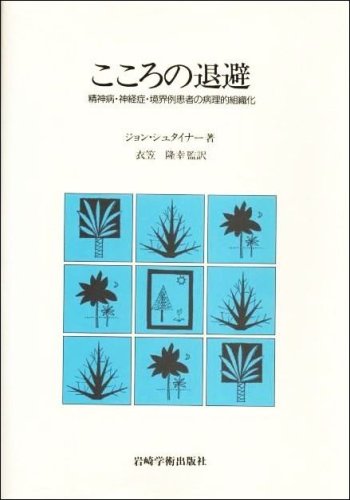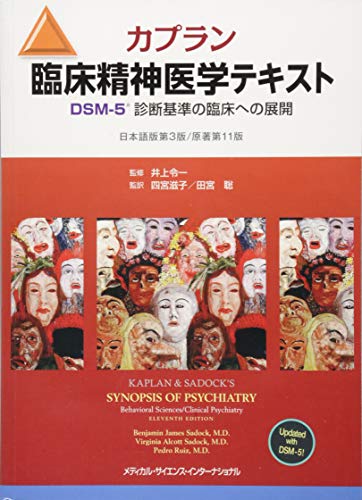1 0 0 0 OA 縮小論的地域社会理論の可能性を求めて
- 著者
- 徳野 貞雄
- 出版者
- Japan Association for Urban Sociology
- 雑誌
- 日本都市社会学会年報 (ISSN:13414585)
- 巻号頁・発行日
- vol.2010, no.28, pp.27-38, 2010 (Released:2011-12-20)
- 被引用文献数
- 1
1 0 0 0 OA オープンコースウェアのデザイン指針による改善案の検証
- 著者
- 王 宛奕 田中 佐代子
- 出版者
- 一般社団法人 日本デザイン学会
- 雑誌
- 日本デザイン学会研究発表大会概要集 日本デザイン学会 第69回研究発表大会
- 巻号頁・発行日
- pp.162, 2022 (Released:2022-08-30)
現在、オンライン学習への需要が高まる中、オープンコースウェア(OCW)の質に問う研究が注目されている。しかし国内のOCWの利用率は低く、OCWにおけるデザインの質に関する研究例はまだ少ない。筆者等による先行研究では、OCWのデザインをユーザビリティデザインとインストラクショナルデザインという2つ側面に分けて、国内外で認知度のある4つのオンライン学習サイトをケーススタディとして取り上げて検討し、OCWのようなオンライン学習サイトの探索効率を高め、円滑に学習できるデザイン指針案を提案した。そこで、本稿では、提案したデザイン指針案の有効性を検証するため、国内認知度が高いOCWサイト (北海道大学OCW)を例として、デザイン指針案をもとにウェブページのプロトタイプ(改善案)を作成し、既存サイトとの比較検証実験を行って有効性と改善度を評価した。
1 0 0 0 飛騨山脈で新たに見出された現存氷河とその特性
- 著者
- 福井 幸太郎 飯田 肇 小坂 共栄
- 出版者
- 日本地理学会 ; 2009-
- 雑誌
- 地理学評論. [Series A] (ISSN:18834388)
- 巻号頁・発行日
- vol.91, no.1, pp.43-61, 2018-01
1 0 0 0 IR 『ルツィンデ』のアラベスク : 文体の試行と「子供の死」
- 著者
- 清水 恒志
- 出版者
- 東京大学大学院ドイツ語ドイツ文学研究会
- 雑誌
- 詩・言語 (ISSN:09120041)
- 巻号頁・発行日
- no.79, pp.27-52, 2014-03
F. Schlegel's „Lucinde" ist ein Versuchsroman im Zeichen der „Arabeske" und thematisiert die Erprobung stilistischer Möglichkeiten. Der Roman ist als ein Bekenntnis des Protagonisten Julius zu seiner Geliebten Lucinde geschrieben. „Lucinde" besteht aus vierzehn Kapiteln, von denen jedes einen anderen Stil, z.B. „Idylle", „Fantasie", „Briefe" aufweist. Die zeitliche Ordnung der Erzählung ist undeutlich, und konkrete Schilderungen sind nahezu aufgegeben. In dem Roman gibt es ein Moment, das sich als Leitmotiv verstehen lässt. Dabei handelt es sich um den Tod der Kinder. In den Kapiteln „Prolog" oder „Charakteristik der kleinen Wilhelmine" erscheinen Kinder als Metaphern von Kunst. Merkwürdig ist dabei, dass die Kinder oftmals als diejenigen dargestellt werden, die sterben müssen. Solche Todesfälle geschehen dreimal: bei Lisett's Selbstmord mit ihrem Embryo, beim frühen Tod von Lucindes Sohn, beim Tod Guidos, dem Sohn von Lucinde und Julius. In der bisherigen Forschung wurde dieses Muster noch nicht behandelt. Dabei hängt dieses Motiv mit „Lucinde" als romantischem Bildungsroman zusammen. „Lucinde" ist ein Nachkomme von Goethes „Wilhelm Meisters Lehrjahre". Das kann man unter anderem am Kapitel „Lehrjahre der Männlichkeit" ablesen. In „Wilhelm Meisters Lehrjahren" erscheint Wilhelms Sohn Felix als Bote, der das Ende von Wilhelms Lehrjahren verkündet. Im bürgerlichen Bildungsroman ist das Kind ein Symbol der vollendeten Bildung. In „Lucinde" aber ist das Kind eine Metapher der Kunst. Obwohl Julius seine „Lehrjahre der Männlichkeit" vollendet hat, muss sein Kind am Ende des Romans – in der Fantasie – sterben. Das zeigt, dass Bildung in „Lucinde" nicht bedeutet, eine Familie zu gründen oder Vater zu werden. „Lucinde" als Bildungsroman entfaltet zwei Bedeutungen. Bildung umfasst zunächst die künstlerische Bildung. Nach den „Lehrjahren der Männlichkeit" verbindet sie sich mit dem menschlichen Wachstum von Julius. In der „Lucinde" muss man unter Bildung die Vollendung der Kunst verstehen. Am Ende begreift Julius – durch die tödliche Krankheit Lucindes – vollkommen, dass der Künstler für die Vollendung der Kunst „den süßen Tod" benötigt. Gewissermaßen ermordet er seinen Sohn: Er lässt sein Werk unvollendet. Er erlangt die Erkenntnis, dass nicht das unbedeutende wirkliche Leben, sondern die Fantasie die bedeutendste Wahrheit sei. Dabei kehrt sich der Wert zwischen Wirklichkeit und Fantasie um. Seine Kunst entfaltet sich für immer durch romantische Unvollendung. Meine Abhandlung weist nach, dass die unbestimmt und abstrakt scheinende Arabeske mit dem Tod der Kinder als Leitmotiv übereinstimmt. Der wiederholte Verlust der Kinder symbolisiert das Erproben und Scheitern des Kunstwerks. Um das Erproben des Stils in der Struktur wie auch im Handlungsinhalt darzustellen, benötigte Schlegel „den Tod der Kinder" als Leitmotiv. Und dies fügt sich zur „Lucinde" als Arabeske, die als die versponnene unfruchtbare Blume ausschließlich ästhetizistisch ist.
1 0 0 0 OA あなたの印象は1分で悪化する ―既読後の時間経過が印象評価に与える影響―
1 0 0 0 こころの退避 : 精神病・神経症・境界例患者の病理的組織化
- 著者
- ジョン・シュタイナー著 衣笠隆幸監訳
- 出版者
- 岩崎学術出版社
- 巻号頁・発行日
- 1997
1 0 0 0 シルヴィーとブルーノ・完結編 : Mischmasch 特別号
- 著者
- 日本ルイス・キャロル協会編
- 出版者
- 日本ルイス・キャロル協会編
- 巻号頁・発行日
- 2016
1 0 0 0 OA 免疫チェックポイント阻害剤のin situ増幅による膠芽腫のmRNA療法
- 著者
- 片岡 一則 Cabral Horacio 津本 浩平
- 出版者
- 公益財団法人川崎市産業振興財団(ナノ医療イノベーションセンター)
- 雑誌
- 挑戦的研究(開拓)
- 巻号頁・発行日
- 2018-06-29
免疫チェックポイント阻害剤によるがん免疫療法を膠芽腫に対して奏功させるためには、膠芽腫が形成する血液脳腫瘍関門を突破するとともに膠芽腫内の免疫チェックポイント阻害剤の濃度を格段に高められる革新的技術の開発が不可欠である。そこで、本研究では、免疫チェックポイント阻害剤をコードする伝令RNA(mRNA)の構築とmRNAを膠芽腫に届ける高分子ミセルの開発に取り組むことにより、膠芽腫内で大量の免疫チェックポイント阻害剤を持続的に増幅産生させ、膠芽腫を徹底的に駆逐できるがん免疫療法を開発する。
1 0 0 0 OA 寿司の摂取状況とすし飯の味付けの評価
- 著者
- 奥谷 香 坂本 薫
- 出版者
- 一般社団法人 日本調理科学会
- 雑誌
- 日本調理科学会誌 (ISSN:13411535)
- 巻号頁・発行日
- vol.53, no.5, pp.335-343, 2020-10-05 (Released:2020-10-12)
- 参考文献数
- 17
近年,行事食や伝統料理,郷土料理などを若年層へ受け継ぎにくいことが報告されている。若い世代へこれらを伝えていくためには,世代や居住地域による嗜好の違い等を把握し,地域の食を伝承していく課題を見出す必要があると考えられる。そこで,行事食や伝統料理,郷土料理として日本人に受け継がれてきた寿司(早ズシ)の摂取状況調査とすし飯の官能評価を行い,寿司の摂取状況やすし飯の味付けの評価に世代や居住地域の違いがどのように関連するかについて検討した。その結果,食べることが最も多い寿司の種類は,どの世代も「にぎり寿司」であり,入手方法は若い世代は「回転寿司」が最も多かった。さらに,若い世代は普段の食事として寿司を食べており,すし飯の嗜好は世代や居住地域の違いで異なっていることが明らかとなった。地域の食を伝承していくためには,特徴をいかしつつ,文化的背景を知らせたり,味付けの一部をアレンジしたりし,興味を持ち,食べてみたいと思う取組を行うなどの工夫が必要であると考えられた。
- 著者
- 白井 祐浩
- 出版者
- 志學館大学
- 雑誌
- 研究紀要. 志學館大学=Research bulletin of the Faculty of Humanities, Shigakukan University (ISSN:13486225)
- 巻号頁・発行日
- vol.43, pp.33-58, 2022-03-30
- 著者
- Ryo MIZUTA Yoshihiro OTANI Kentaro FUJII Atsuhito UNEDA Joji ISHIDA Takehiro TANAKA Shuntaro IKEGAWA Nobuharu FUJII Yoshinobu MAEDA Isao DATE
- 出版者
- The Japan Neurosurgical Society
- 雑誌
- NMC Case Report Journal (ISSN:21884226)
- 巻号頁・発行日
- vol.9, pp.275-280, 2022-12-31 (Released:2022-09-03)
- 参考文献数
- 22
Although high-dose methotrexate (HD-MTX) is the standard therapy for primary central nervous system lymphoma (PCNSL), the prognosis remains poor. Because 90% of PCNSL is diffuse large B-cell lymphoma (DLBCL), chimeric antigen receptor (CAR) -T cell therapy is expected to be beneficial. However, there are limited reports on CAR-T cell therapy for PCNSL because of the concern of neurotoxicity. Here, we report a case of relapsed PCNSL treated with anti-CD19 CAR-T cell therapy. A 40-year-old woman presenting with visual disturbance in her left eye was initially diagnosed with bilateral uveitis. Her histological diagnosis was DLBCL, and she was positive for CD19. Although she received chemotherapy including HD-MTX, the tumor relapsed in her right occipital lobe. She underwent remission induction therapy and then anti-CD19 CAR-T cell therapy. Cytokine release syndrome (CRS) grade 2 occurred, but there were no complications of CAR-T cell-related encephalopathy syndrome (CRES). She has achieved complete response for more than 1 year. Anti-CD19 CAR-T cell therapy is a revolutionary immunotherapy for treating relapsed or refractory (R/R) B lineage malignancies. Although there are concerns regarding CRS and CRES in central nervous system lymphoma, the use of anti-CD19 CAR-T cells to treat R/R PCNSL is safe and feasible.
1 0 0 0 OA 東西宗教研究 : 東西宗教交流学会年次報告
- 出版者
- 南山大学
- 巻号頁・発行日
- vol.2011年, no.(10),
1 0 0 0 IR 芳香性植物の嗜好性と利用実態および食材としての印象に関する研究
1 0 0 0 OA 近代日本における開拓地の地域的展開 農林省農務局編『開墾地移住経営事例』の分析
- 著者
- 椿 真智子
- 出版者
- 公益社団法人 日本地理学会
- 雑誌
- 地理学評論 Ser. A (ISSN:00167444)
- 巻号頁・発行日
- vol.69, no.11, pp.879-891, 1996-11-01 (Released:2008-12-25)
- 参考文献数
- 43
The purpose of this paper is to examine the distribution patterns and characteristics of the development of reclaimed land in the modern period based on the cases recorded in the Kaikonchi Ijyu Keiei Jirei (The Management Cases of Reclaimed Land), government documents published by the Japanese Ministry of Agriculture and Forestry in 1922 and 1927. These official documents contain information concerning the location of reclaimed land, land uses, types of farming conducted on reclaimed land, major crops and supplemental employment taken up by settlers. Because of the lack of data, reclamation projects in Hokkaido are not included in my analysis of the development of reclaimed land. During the 1920s, rural villages throughout the country suffered from an economic slump and population increase. The Ministry of Agriculture and Forestry carried out a policy which called for the development of land under cultivation. The Kaikonchi Ijyu Keiei Jirei served as the basic guidelines for the enforcement of the ministry's land development policy. An examination of data included in the above-mentioned documents reveals the following: 1. The scale of reclamation projects in the Tohoku and northern Kanto and Chubu regions was larger than in the western region. The number of reclamation projects in the western region was also small in comparison to those recorded for eastern and northeastern Japan. The relative scarcity of reclaimable land and scarcity of government-owned land for reclamation purposes, contributed to this uneven development. In Aomori, Tochigi and Okayama prefectures, large farms were developed by nobles and wealthy merchants with large funds. 2. There were three periods when reclamation projects were actively conducted: early Meiji era, midMeiji era, and former Taisho era. During the early Meiji era, former samurai (shizoku) who received money from the Meiji government conducted reclamation projects. During the mid-Meiji era, privatization of government-owned land promoted the development of land under cultivation. The acquisition of reclaimable land by noble families (kazoku) also fostered the expansion of reclaimed land in the Tohoku region. During the Taisho era, the adoption of the Land Arrangement Law of 1909 permitted the opening of marginal areas adjacent to existing agricultural land. 3. Reclamation and settlement projects in the modern period were initiated by many individuals and groups, including former daimyo (kazoku), former samurai (shizoku), cooperatives and corporations. Many reclamation projects by shizoku were promoted during the first two decades of the Meiji era. Most of these enterprises, however, failed. As a result, individuals lost ownership of land they had reclaimed. The farms developed by kazoku were mostly located in Tochigi prefecture in the 1880s. 4. The management of reclaimed land centered around field farming, combined with sericulture, handicrafts, and livestock breeding. The main crops were wheat, barley, sweet potatoes, potatoes and other staple crops. In addition, settlers grew vegetables, fruits, tobacco, jute and other cash crops to supplement their meager income. More importantly, they engaged in sericulture in many regions. Because of the low productivity of reclaimed land, most settlers had to produce some cash crops and earned additional income by engaging in supplemental employment. 5. People who settled on reclaimed land not only came from nearby villages but also from other distant places. The opening of new settlements promoted intervillage migration, and constituted one of the major characteristics of modern Japan.
1 0 0 0 10年の歩み
- 出版者
- 日本鉄道車輛工業協会
- 巻号頁・発行日
- 1958
1 0 0 0 明石市文化財年報
- 著者
- 明石市教育委員会 [編]
- 出版者
- 明石市立文化博物館
- 巻号頁・発行日
- 0000
- 著者
- ベンジャミン J. サドック バージニア A. サドック ペドロ ルイース編著
- 出版者
- メディカル・サイエンス・インターナショナル
- 巻号頁・発行日
- 2016
1 0 0 0 OA 菊地寛『真似』について
- 著者
- 小鹿原 敏夫
- 出版者
- 京都大学大学院文学研究科国語学国文学研究室
- 雑誌
- 京都大学國文學論叢 (ISSN:13451723)
- 巻号頁・発行日
- vol.28, pp.1-12, 2012-09-30




